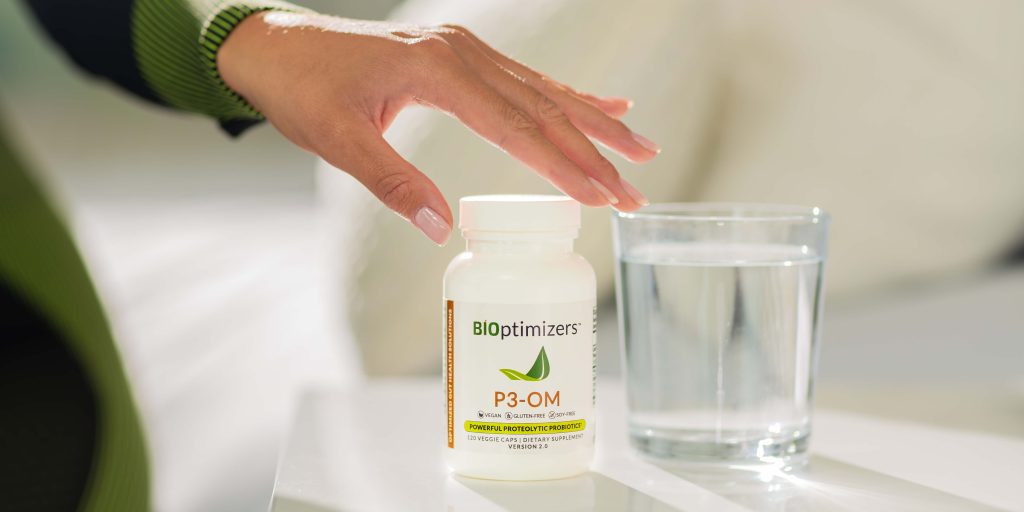Medicinal Mushrooms: What You Need to Know & How Best to Use Them
What are Medicinal Mushrooms? Medicinal mushrooms have been used for centuries in traditional cultures for their potential health benefits. These mushrooms contain bioactive compounds that support various aspects of well-being, including immune function, cognitive health, and overall vitality. Don’t confuse medicinal mushrooms with psychoactive ones. Medicinal mushrooms, like reishi, chaga, lion’s mane, and cordyceps, provide…

What are Medicinal Mushrooms?
Medicinal mushrooms have been used for centuries in traditional cultures for their potential health benefits. These mushrooms contain bioactive compounds that support various aspects of well-being, including immune function, cognitive health, and overall vitality.
Don’t confuse medicinal mushrooms with psychoactive ones. Medicinal mushrooms, like reishi, chaga, lion’s mane, and cordyceps, provide a nutritional benefit without the reality-shifting compounds in psychedelic mushrooms.

How Did Traditional Cultures Discover Medicinal Mushrooms?
Traditional cultures discovered the benefits of medicinal mushrooms through observations in nature and empirical knowledge passed down through generations. People noticed that certain mushrooms had nutritional value and a therapeutic effect when consumed or used externally.
Over time, these mushrooms became integral to traditional medicine systems, such as Traditional Chinese Medicine (TCM) and Ayurveda.

How Do I Take Medicinal Mushrooms?
What Parts to Take and Why:
Fruiting Body
The fruiting body is the visible part of the mushroom, often called the “mushroom cap.” It is considered the most potent and energetically rich part.
Fruiting bodies are known for their broader range of bioactive compounds. They are traditionally associated with therapeutic benefits in TCM and other traditional practices.
Fruiting bodies are considered to have a more yang nature in TCM. They are often associated with warmth, activity, and outward manifestation. Fruiting bodies are believed to have a tonifying or strengthening effect on the body’s Qi and can help support physical energy, vitality, and resilience.
Mycelium
The mycelium is a network of thread-like filaments that make up the bottom part or roots of the mushroom.
Mycelium extracts may contain different bioactive compounds compared to the fruiting body. Mycelium is valued for its potential nutritive properties and is often used for its beta-glucan content.
Mycelium is associated with a more yin nature in TCM. It is seen as cooler, nourishing, and inward-focused. Mycelium is believed to have a nourishing and calming effect on the body’s Qi. It is often considered to support the body’s ability to regenerate, restore balance, and promote internal harmony.
Bioactive Compounds
Mushrooms have a variety of bioactive compounds. These are natural substances that can have beneficial effects on human health. Here are some key bioactive compounds found in mushrooms:
- Polysaccharides: Polysaccharides, such as beta-glucans have been extensively studied for their immunomodulatory properties. This means they can help regulate and support the immune system. Polysaccharides enhance immune response, exhibit antioxidant activity, and have potential anti-inflammatory effects.
- Terpenoids: Terpenoids are compounds that contribute to the unique flavors and aromas of mushrooms with immune-balancing and several other health properties.
- Phenolic Compounds: Phenolic compounds are antioxidants. They can help protect cells from damage caused by free radicals and deliver many other health benefits. Examples of phenolic compounds in mushrooms include phenolic acids, flavonoids, and tannins.
- Amino Acids: Mushrooms are a source of amino acids. Amino acids are the building blocks of proteins. They play crucial roles in various biological processes that your body needs to function properly. Mushrooms are particularly rich in the amino acid called ergothioneine, which is known for its antioxidant properties.
- Vitamins and Minerals: Mushrooms contain several essential vitamins and minerals. They are a good source of B vitamins, including riboflavin (B2), niacin (B3), and pantothenic acid (B5). Mushrooms also contain minerals such as selenium, copper, potassium, and phosphorus.
- Other Compounds: Mushrooms may contain other bioactive compounds, including lectins, peptides, enzymes, and volatile compounds. These compounds contribute to the unique characteristics and potential health benefits of different kinds of mushrooms.
It’s important to note that the types and concentrations of bioactive compounds can vary among mushroom species. How the mushroom is grown and prepared also affects them. The bioactivity and health benefits of mushrooms are a subject of ongoing scientific research.
Ways to Consume Traditional Mushrooms
Culinary Use:
Medicinal mushrooms can be added to your meals. They can add depth to flavors and have potential health benefits. Soups, stews, stir-fries, or sautés are good ways to enjoy them.
Dried Mushrooms:
Dried mushrooms are a convenient and versatile option. They can be rehydrated and used in recipes similar to fresh mushrooms. To use dried mushrooms, soak them in water until they become soft and pliable.
You can cut them up or blend them and add them to your food. The soaking liquid can also be used to add flavor to dishes. Dried mushrooms offer a longer shelf life and are readily available in stores or online.
Unfortunately, the amount of mushrooms you must consume to get a therapeutic effect might overwhelm your palette. Also, some beneficial components may be less bioavailable in whole mushrooms since the cell walls may interfere with the absorption of these substances. This is when mushroom extracts may be more appropriate if the primary goal is to reap specific health benefits rather than consuming the mushrooms as food.
Mushroom Extracts:
Mushroom extracts are concentrated forms of medicinal mushrooms. The extracts can be made into powders, making them a convenient way to get the benefits of the mushrooms.
While extracts are convenient they can lack the natural balance of compounds found in whole mushrooms. The amount and type of compounds that are extracted can be different with each method used.
There are different types of extracts, each with its own characteristics:
- Water Extracts: These extracts are made by hot water extraction, either as tea or by boiling. The mushrooms are simmered in water. Water extracts primarily capture water-soluble compounds, including polysaccharides. They are often used for their immune-modulating and antioxidant properties.
- Alcohol Extracts: Alcohol extracts, also known as tinctures, are made by soaking the mushrooms in alcohol (such as ethanol). Alcohol extracts a broader range of compounds than water alone. including both water-soluble and alcohol-soluble constituents.
- CO2 Extracts: CO2 extraction is another method used to get bioactive compounds from medicinal mushrooms. It utilizes supercritical carbon dioxide (CO2) as a solvent to selectively dissolve and extract the desired compounds. CO2 extracts can be further processed into powders, making them convenient for consumption and easy to incorporate into various forms such as capsules, tablets, or added to foods and beverages.
What Are Extract Ratios Such as 10:1 and 50:1 Numbers on the Supplement Labels, such as Mushroom Breakthrough?
Extract ratios indicate the concentration and strength of the extract compared to the original mushroom material. For example, a 10:1 extract ratio means 10 grams of the original material (e.g., mushroom) is concentrated into 1 gram of extract. Higher ratios typically indicate higher potency.
It’s important to follow the recommended dosage provided by the manufacturer or consult with a healthcare professional for guidance on the appropriate extract ratio and dosage for your specific needs.

Medicinal Mushrooms and Their Benefits
Reishi (Ganoderma lucidum)
Recognized for: Immune support, relaxation, potential antioxidant, and inflammation-balancing properties.
Bioactive Compounds/Nutrients: Polysaccharides (including beta-glucans), triterpenes (such as ganoderic acids), amino acids, and other antioxidants.
Best Part to Take: Fruiting body.
Common Extract Ratio: 10:1 or 20:1.
Chaga (Inonotus obliquus)
Recognized for: Immune modulation, potential antioxidant and inflammation-balancing effects, and supporting healthy blood sugar levels.
Bioactive Compounds/Nutrients: Polysaccharides (including beta-glucans), melanin, phenolic compounds (such as betulinic acid).
Best Part to Take: Fruiting body.
Common Extract Ratio: 4:1 or 10:1.
Lion’s Mane (Hericium erinaceus)
Recognized for: Cognitive support, nerve regeneration, and potential memory and focus enhancement.
Bioactive Compounds/Nutrients: Polysaccharides (including beta-glucans), erinacines, hericenones, and amino acids.
Best Part to Take: Fruiting body or mycelium.
Common Extract Ratio: 10:1 or 20:1 for fruiting body; 1:1 or 1:2 for mycelium.
Cordyceps (Cordyceps sinensis)
Recognized for: Energy and stamina enhancement, potential adaptogenic effects, and respiratory support.
Bioactive Compounds/Nutrients: Polysaccharides (including beta-glucans), cordycepin, cordycepic acid, and amino acids.
Best Part to Take: Fruiting body or mycelium.
Common Extract Ratio: 1:1 or 1:2 for mycelium; 8:1 or 10:1 for fruiting body.
Shiitake (Lentinula edodes)
Recognized for: Immune support, cardiovascular health, and potential inflammation-balancing and antioxidant effects.
Bioactive Compounds/Nutrients: Polysaccharides (including lentinan), beta-glucans, ergosterol (vitamin D precursor), and amino acids.
Best Part to Take: Fruiting body.
Common Extract Ratio: 4:1 or 10:1.
Maitake (Grifola frondosa)
Recognized for: Immune enhancement, healthy blood sugar regulation, and regulating cell growth.
Bioactive Compounds/Nutrients: Polysaccharides (including beta-glucans), ergosterol, and amino acids.
Best Part to Take: Fruiting body.
Common Extract Ratio: 4:1 or 10:1.
Turkey Tail (Trametes versicolor)
Recognized for: Immune modulation, healthy cell growth, and well-being support.
Bioactive Compounds/Nutrients: Polysaccharides (including beta-glucans), protein-bound polysaccharide-K (PSK), ergosterol, and phenolic compounds.
Best Part to Take: Fruiting body.
Common Extract Ratio: 4:1 or 10:1.

Collagenius: The Best Medicinal Mushroom Supplement
Collagenius is a groundbreaking powdered supplement that combines the potent benefits of medicinal mushrooms and collagen to optimize your overall health.
With highly concentrated extract ratios, this unique formula allows you to experience the incredible advantages of medicinal mushrooms without consuming extremely large quantities.
Each serving of Collagenius is carefully crafted to deliver exceptional results. It features an impressive 50:1 extract ratio of Lion’s Mane fruiting body, providing a substantial 3000 mg dosage.
Additionally, it contains a 100:1 extract ratio of Chaga fruiting body at 2000 mg, 100:1 Cordyceps mycelium extract at 1000 mg, and 100:1 Reishi fruiting body extract at 1000 mg.
These extract ratios ensure that you receive a concentrated dose of bioactive compounds, including polysaccharides, triterpenes, and antioxidants, unlocking the full potential of these remarkable mushrooms.
The advantage of Collagenius lies in its high extract ratios, which allow for maximum potency and efficacy. With the concentrated extracts, you don’t have to consume large quantities of mushrooms to reap their benefits.
This means you can enjoy the exceptional advantages of medicinal mushrooms conveniently and without overwhelming your daily routine.
Alongside the mushroom extracts, Collagenius includes marine collagen at 500 mg and bovine collagen at 2500 mg, providing additional support for healthy skin, joints, and bones.
Incorporating these medicinal mushrooms into your wellness routine can provide potential health benefits. However, it’s important to consult with healthcare professionals, especially if you have any underlying health conditions or are taking medications, to ensure their safety and appropriate use.

- Venturella G, Ferraro V, Cirlincione F, Gargano ML. Medicinal Mushrooms: Bioactive Compounds, Use, and Clinical Trials. Int J Mol Sci. 2021;22(2). doi:10.3390/ijms22020634





